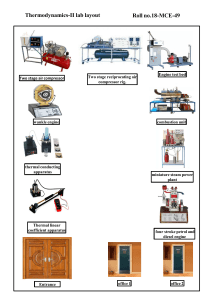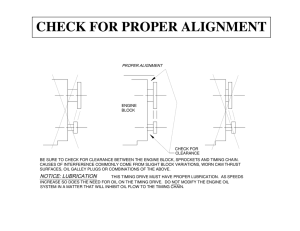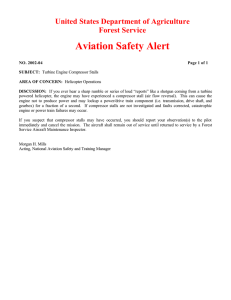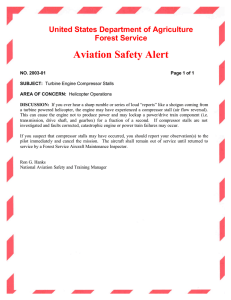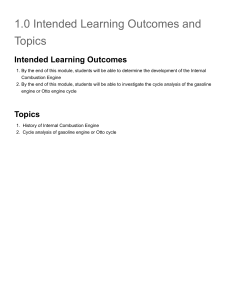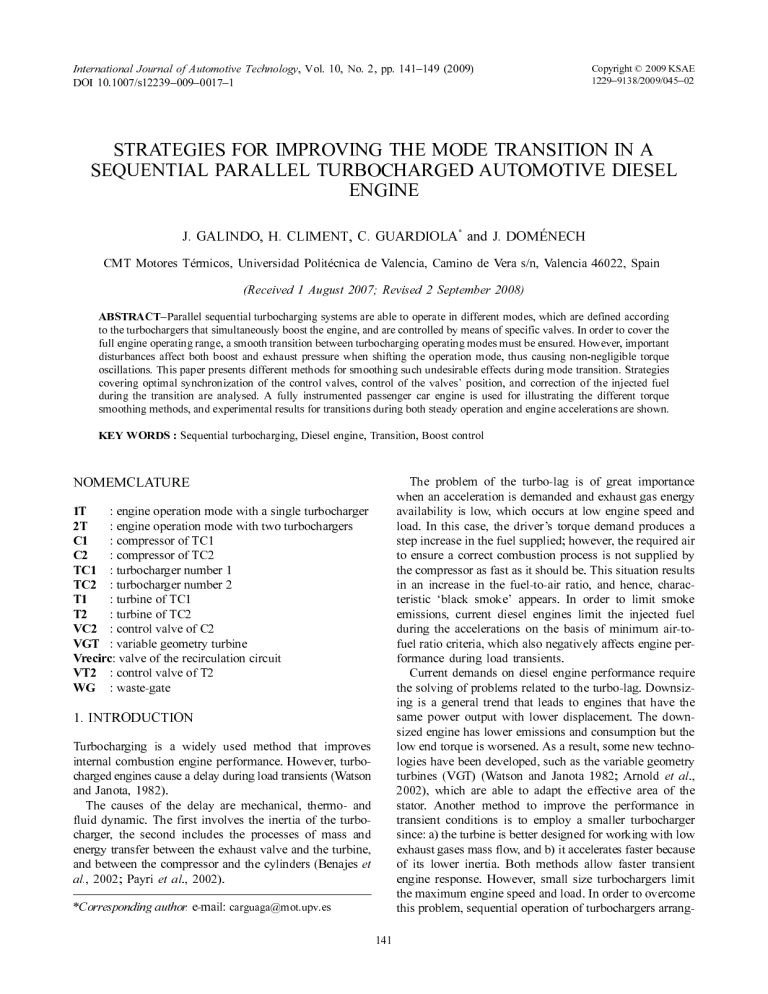
International Journal of Automotive Technology, Vol. 10, No. 2, pp. 141−149 (2009) DOI 10.1007/s12239−009−0017−1 Copyright © 2009 KSAE 1229−9138/2009/045−02 STRATEGIES FOR IMPROVING THE MODE TRANSITION IN A SEQUENTIAL PARALLEL TURBOCHARGED AUTOMOTIVE DIESEL ENGINE J. GALINDO, H. CLIMENT, C. GUARDIOLA and J. DOMÉNECH * CMT Motores Térmicos, Universidad Politécnica de Valencia, Camino de Vera s/n, Valencia 46022, Spain (Received 1 August 2007; Revised 2 September 2008) ABSTRACT−Parallel sequential turbocharging systems are able to operate in different modes, which are defined according to the turbochargers that simultaneously boost the engine, and are controlled by means of specific valves. In order to cover the full engine operating range, a smooth transition between turbocharging operating modes must be ensured. However, important disturbances affect both boost and exhaust pressure when shifting the operation mode, thus causing non-negligible torque oscillations. This paper presents different methods for smoothing such undesirable effects during mode transition. Strategies covering optimal synchronization of the control valves, control of the valves’ position, and correction of the injected fuel during the transition are analysed. A fully instrumented passenger car engine is used for illustrating the different torque smoothing methods, and experimental results for transitions during both steady operation and engine accelerations are shown. KEY WORDS : Sequential turbocharging, Diesel engine, Transition, Boost control NOMEMCLATURE The problem of the turbo-lag is of great importance when an acceleration is demanded and exhaust gas energy availability is low, which occurs at low engine speed and load. In this case, the driver’s torque demand produces a step increase in the fuel supplied; however, the required air to ensure a correct combustion process is not supplied by the compressor as fast as it should be. This situation results in an increase in the fuel-to-air ratio, and hence, characteristic ‘black smoke’ appears. In order to limit smoke emissions, current diesel engines limit the injected fuel during the accelerations on the basis of minimum air-tofuel ratio criteria, which also negatively affects engine performance during load transients. Current demands on diesel engine performance require the solving of problems related to the turbo-lag. Downsizing is a general trend that leads to engines that have the same power output with lower displacement. The downsized engine has lower emissions and consumption but the low end torque is worsened. As a result, some new technologies have been developed, such as the variable geometry turbines (VGT) (Watson and Janota 1982; Arnold et al., 2002), which are able to adapt the effective area of the stator. Another method to improve the performance in transient conditions is to employ a smaller turbocharger since: a) the turbine is better designed for working with low exhaust gases mass flow, and b) it accelerates faster because of its lower inertia. Both methods allow faster transient engine response. However, small size turbochargers limit the maximum engine speed and load. In order to overcome this problem, sequential operation of turbochargers arrang- 1T : engine operation mode with a single turbocharger 2T : engine operation mode with two turbochargers C1 : compressor of TC1 C2 : compressor of TC2 TC1 : turbocharger number 1 TC2 : turbocharger number 2 T1 : turbine of TC1 T2 : turbine of TC2 VC2 : control valve of C2 VGT : variable geometry turbine Vrecirc: valve of the recirculation circuit VT2 : control valve of T2 WG : waste-gate 1. INTRODUCTION Turbocharging is a widely used method that improves internal combustion engine performance. However, turbocharged engines cause a delay during load transients (Watson and Janota, 1982). The causes of the delay are mechanical, thermo- and fluid dynamic. The first involves the inertia of the turbocharger, the second includes the processes of mass and energy transfer between the exhaust valve and the turbine, and between the compressor and the cylinders (Benajes et al., 2002; Payri et al., 2002). *Corresponding author. e-mail: carguaga@mot.upv.es 141
